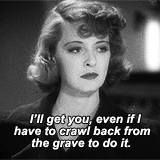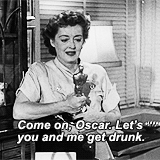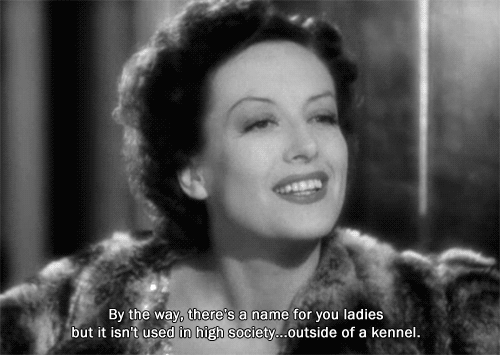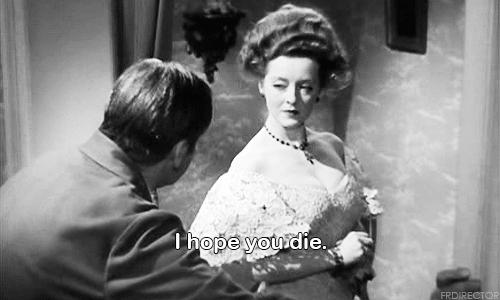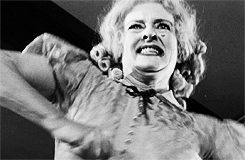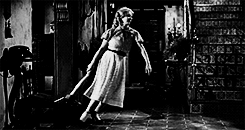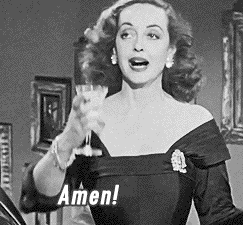This piece was inspired by an episode of The Cooler, KQED's weekly pop culture podcast. Give it a listen!
Bette Davis v. Joan Crawford: The Hateful History Behind Old Hollywood's Nastiest Feud
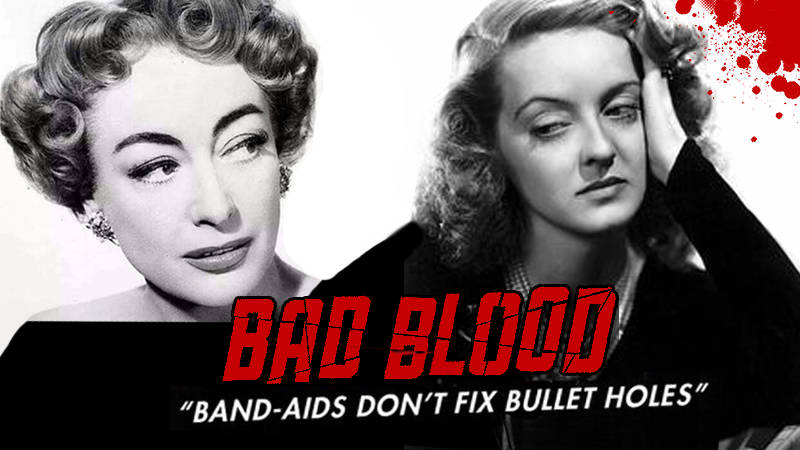
Fresh off hits like American Crime Story and The People v. OJ Simpson, Ryan Murphy recently announced his next project. Tentatively titled Feud, the 8-episode season will focus on the rivalry between Bette Davis and Joan Crawford. Susan Sarandon will play Ms. Davis and Jessica Lange will star as Ms. Crawford. If you are familiar with this historic feud, you know the series will be must-see juiciness. But for those of you who aren’t up on your Old Hollywood drama, let me take you on a shade retrospective of Davis v. Crawford.
But before we get to the barbed one-liners, let's get some backstory:
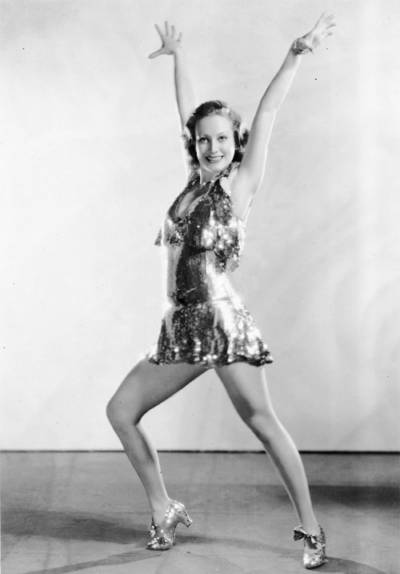
Lucille Fay LeSueur was born to a single mother in Texas and spent her childhood moving from state to state, struggling to get a proper education. She dreamed of a better life as a famous dancer. After some time in various chorus lines, Lucille decided to switch gears and landed a $75 a week gig as an actress at MGM. The studio publicist didn't like the sound of her name (too close to "sewer") so he organized a "Name the Star" magazine contest. And a star (named Joan Crawford) was born!
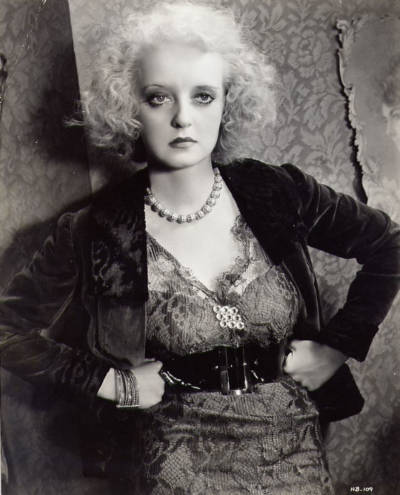
Ruth Elizabeth Davis, known early on as "Betty," grew up in New England and had an easier upbringing. She was fortunate enough to attend boarding schools and receive theater training, which led to time on Broadway. Eventually, she made her way to LA, where success didn't seem likely at first. Upon arrival, the driver who was meant to pick her up left without her because he didn't see anyone that "looked like an actress." Hollywood big wigs didn't think she was sexy enough. But Bette persisted and got her big break two years later with a lead role in The Man Who Played God. Two years after that, her performance as a no-nonsense waitress in Of Human Bondage got so much fanfare that, when she was snubbed at the Oscars, there was such an uproar that the Academy had to change their voting rules.
In the '30s and '40s, both Joan and Bette were at the top of their game. Joan was the movie star, better known for her looks and off-screen hook-ups (she was married to Douglass Fairbanks Jr. and had a thing with Clark Gable, among other notable men), while Bette was considered a serious character actress, intensely focused on her craft.
Back in the day, actors were more or less owned by a studio and couldn’t work on any other productions, unless specifically loaned out. Crawford was part of MGM and Davis was part of Warner Bros. so, even though they were competing for America’s attention, they rarely had to compete for the same roles.
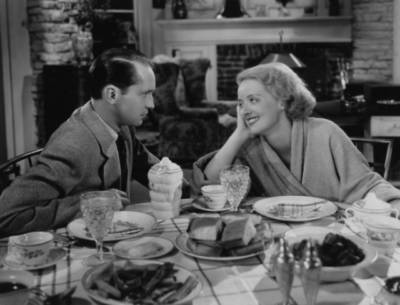
Things started to bubble in 1935 when Bette was filming Dangerous with a hot(ish) guy named Franchot Tone. She developed a crush on him. "I fell in love with Franchot, professionally and privately. Everything about him reflected his elegance, from his name to his manners," Bette said.
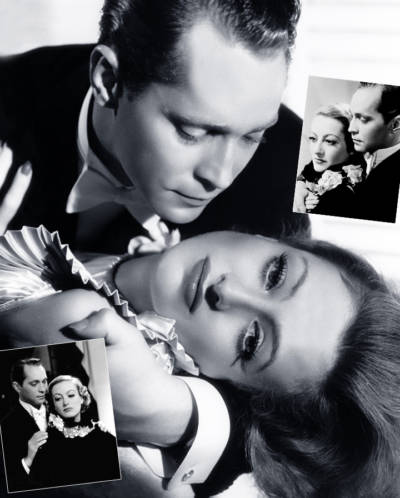
Unfortunately for her, Joan got to him first. Rumor has it that she invited Tone to her home and met him naked in the solarium. It wasn't long before Joan started visiting the set, much to Bette's chagrin. “He was madly in love with her. They met each day for lunch. He would return to the set, his face covered in lipstick. I was jealous of course.” Joan and Franchot married once filming wrapped.
Decades later, Bette would open up about this time in her life to journalist Michael Thorton: "She took him from me. She did it coldly, deliberately and with complete ruthlessness. I have never forgiven her for that and never will."
Dangerous was met with critical acclaim and Bette Davis was nominated for an Oscar. Because she was relatively new to the game and didn't believe she would win, Bette wore a simple navy blue dress to the ceremony. The voters proved her wrong and her name was called. According to legend, Franchot got up and embraced her, while his now-wife Joan refused to get up and had her back to Bette. After being called out for her rude behavior by Franchot, Joan allegedly looked Bette up and down and snidely said "Dear Bette! What a lovely frock."
All was quiet on the western front for a while after that...until Joan left MGM and got hired -- where else? -- Warner Bros! Now Bette and Joan were directly competing for the same roles. Around this time, Bette was considering the titular role in Mildred Pierce, which she eventually turned down. Joan ended up snagging it and won an Oscar for her work.
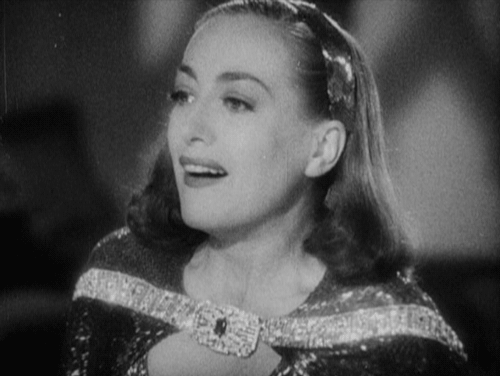

Years of competition and sh*t talk ensued. Here are some highlights:
Joan on Bette:
“Poor Bette! She looks like she’s never had a happy day... or night!... in her life.”
“Miss Davis was always partial to covering up her face in motion pictures. She called it ‘art.’ Others might call it camouflage, a cover-up for the absence of any real beauty.”
“I don’t hate Bette Davis, even though the press wants me to; I resent her. I don’t see how she built a career out of mannerisms instead of real acting ability. She’s a phony, but I guess the public likes that.”
Bette on Joan:
"She has slept with every male star at MGM except Lassie."
"I wouldn't piss on Joan Crawford if she were on fire."
"Why am I so good at playing bitches? I think it’s because I’m not a bitch. Maybe that’s why Miss Crawford always plays ladies."
Eventually, due to Hollywood being grossed out by the idea of women over 29, both actors weren’t in such demand anymore. Work was so hard to come by that Bette resorted to putting out an ad in Variety that read:
"Thirty years experience as an actress in motion pictures. Mobile still and more affable than rumor would have it. Wants steady employment in Hollywood (Has had Broadway)."
In 1961, now in her fifties, Bette was performing on Broadway in Tennessee Williams’ The Night of the Iguana. One night, an unexpected Joan showed up backstage, gave Bette a novel called Whatever Happened to Baby Jane? and proposed that they star in the adaptation. They would play two has-been child star sisters living together. Bette’s character spends the entire film tormenting Joan’s character, who is paralyzed and can't defend herself, so it's no wonder that Bette said Hell yes.
Getting Bette to sign on was the first challenge. The more daunting task was getting someone in Hollywood to finance a movie starring older women. Studio after studio, including Bette and Joan's former home Warner Bros, turned down the idea or claimed they would only be interested if the leading women were replaced with younger talent. Eventually, a small production company called Seven Arts said yes and handed over some meager funds. Both women had to take a drastic pay cut, in exchange for a percentage of the profits, in order to get the ball rolling.
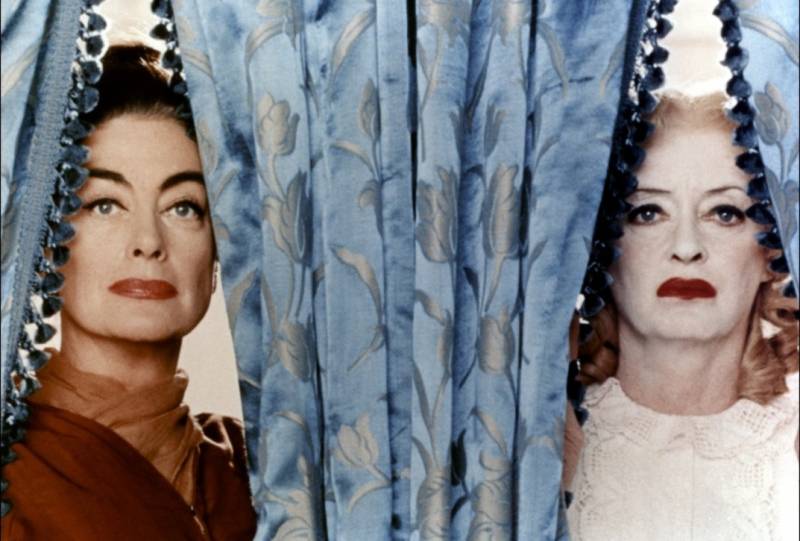
As you might expect, the petty shenanigans on set were of Biblical proportions. For instance, Joan had been married to the CEO of Pepsi and advocated for Pepsi product-placement in the film. Bette responded by having a Coca-Cola machine installed on set. And it didn't take long for the bad behavior to migrate from behind-the-scenes to in front of the camera.
Concerned that Bette would actually hurt her during a scene that required the two actresses to fight, Joan requested a body double, but there was one close-up shot that required her participation. During this take, whether by accident or not, Bette gave Joan's head such a kick that Joan required stitches. What did Bette have to say for herself? “I barely touched her.”
Joan wanted revenge and got it while filming a later scene, which involved Bette dragging her across the room. To prepare, Joan, who knew Bette had a history of back problems, strapped on a weightlifters' belt to make herself as heavy as possible. "There is a way of making it easy on the actor who is doing the carrying, but Crawford wanted Bette to suffer," director Robert Aldrich later said. And suffer she did.
Whatever Happened to Baby Jane? turned out to be a huge hit. Bette and Joan got rich all over again, thanks to the profit percentages they had agreed to in the budget negotiations. The movie also raked it in with five Oscar nods total. Davis was nominated for Best Actress. And none for Joan Crawford.
Joan was not happy for her co-star, to say the least. She actively campaigned against Bette during the Oscar season and hatched a secret plan to humiliate her at the ceremony. Bette lost that year's title to Anne Bancroft and couldn't believe her eyes when none other than Joan, herself, waltzed on stage to collect the award. (Joan had called all the other nominees and offered to accept the award on their behalf, should they win.)
“I almost dropped dead! I was paralyzed with shock. To deliberately upstage me like that! Her behavior was despicable. I will never forget the look she gave me. It was triumphant. It clearly said: 'You didn't win, and I am elated!'" Bette later said.
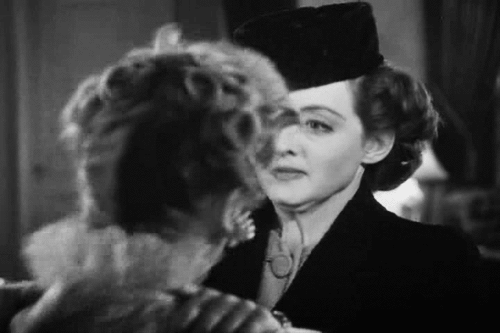
A few years later, Robert Aldrich wanted to get the old gang back together again for Hush... Hush, Sweet Charlotte. The public's interest in the Bette and Joan rivalry had made them so much money the first time around; why not have another go? Both stars agreed, but the film was immediately plagued by drama.
First, the production had to be delayed a month due to Joan wanting to attend a Pepsi sales conference. Once filming did start, Joan complained about no one coming to collect her and her team (a maid, a makeup artist and a hairdresser), after they had landed in Baton Rouge. She also complained about the accommodation, which was too close to garbage cans. Bette snapped, "Oh, Joan, pull yourself together. This is Baton Rouge, not Beverly Hills!"
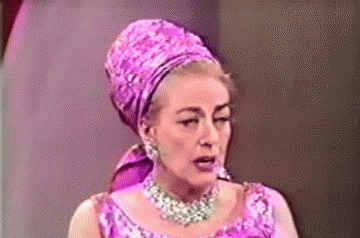
Joan also suspected that Bette had too much control over the director and was plotting against her: "She's practically directing the picture for him right in front of me, so God knows what else she's up to behind my back. I might wind up on the cutting-room floor." And Bette's behavior on set didn't assuage that paranoia; Joan would say "Hello" or "Good morning" every day and Bette would simply ignore her.
As the shoot continued, Joan began complained of exhaustion and refused to work or speak to the director. The suspicion was that she planned to feign illness to get out of the movie. Insurance doctors and private detectives were involved and the studio's insurance company gave the director an ultimatum: either replace Joan or it's a wrap.
The film left Joan behind, who promptly checked herself into a hospital. Olivia de Havilland, a friend of Bette's, was selected as her replacement. Back on set, Bette toasted Joan's exit and Olivia's entrance with a glass full of Coca-Cola.
Bette and Joan would never work together again. Joan died first, but even death didn't soften Bette towards her former co-star. "You should never say bad things about the dead, you should only say good. Joan Crawford is dead. Good.”
Was their feud real? Or was it a media creation, which Bette and Joan capitalized on? Most likely a bit of both. They say that what you hate in someone else is what you hate in yourself. Maybe these two women always found themselves at odds because they were just too similar.
Both came from single-mother households. Both were headstrong Alpha leading ladies trying to survive in a world that only allowed for one. Both were Aries (if you believe in that sort of thing). Both struggled with love (four marriages each) and parenting (their children wrote tell-alls about them).
Just imagine what could have been if they had realized how much they had in common...
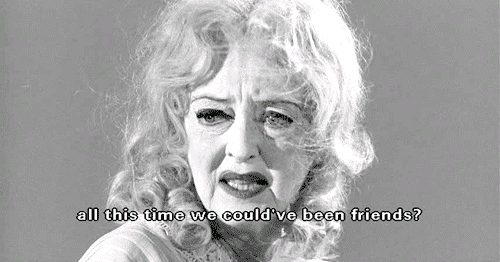
For even more Bette and Joan thoughts and feelings, get a load of this episode of The Cooler:
